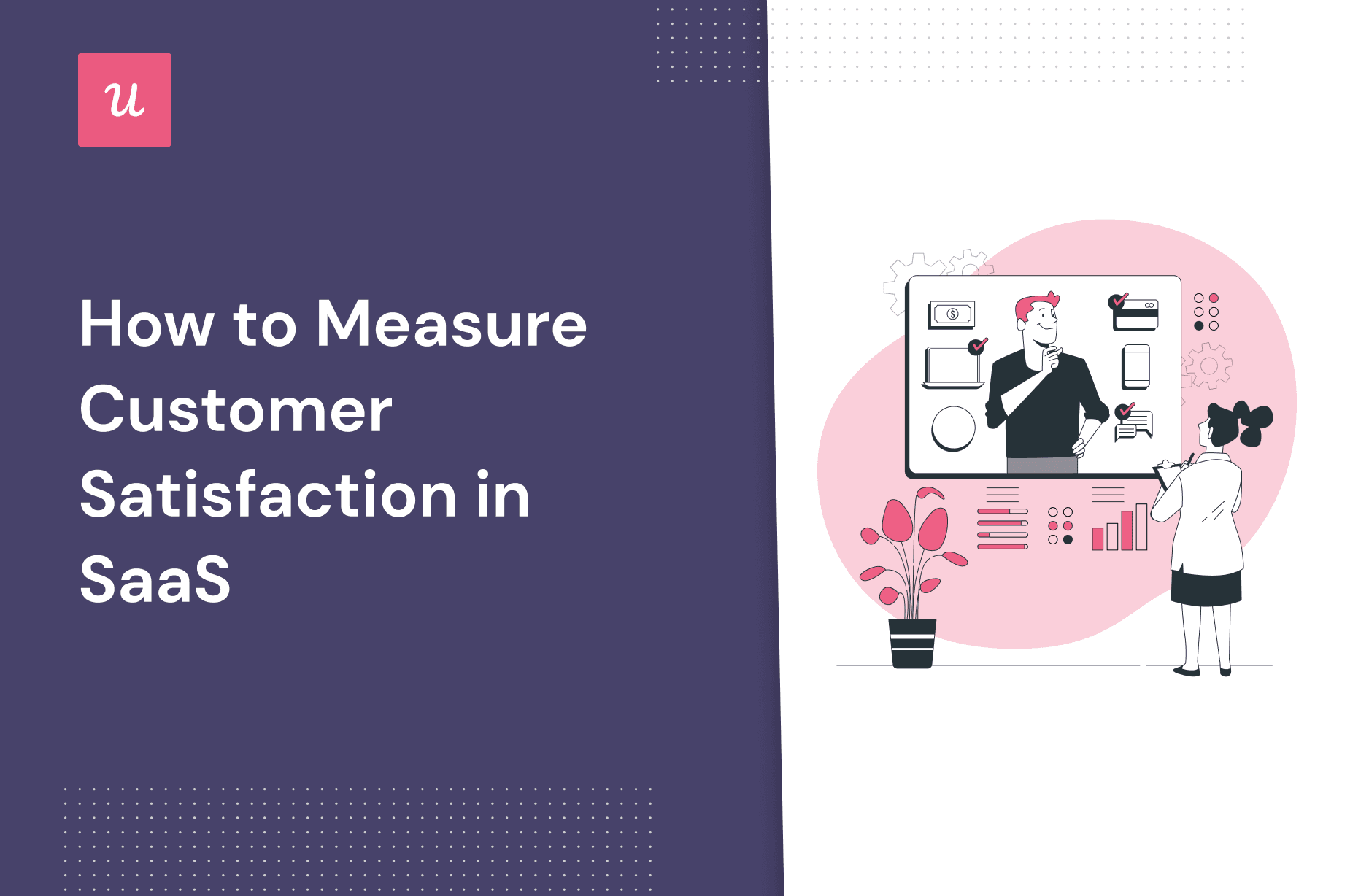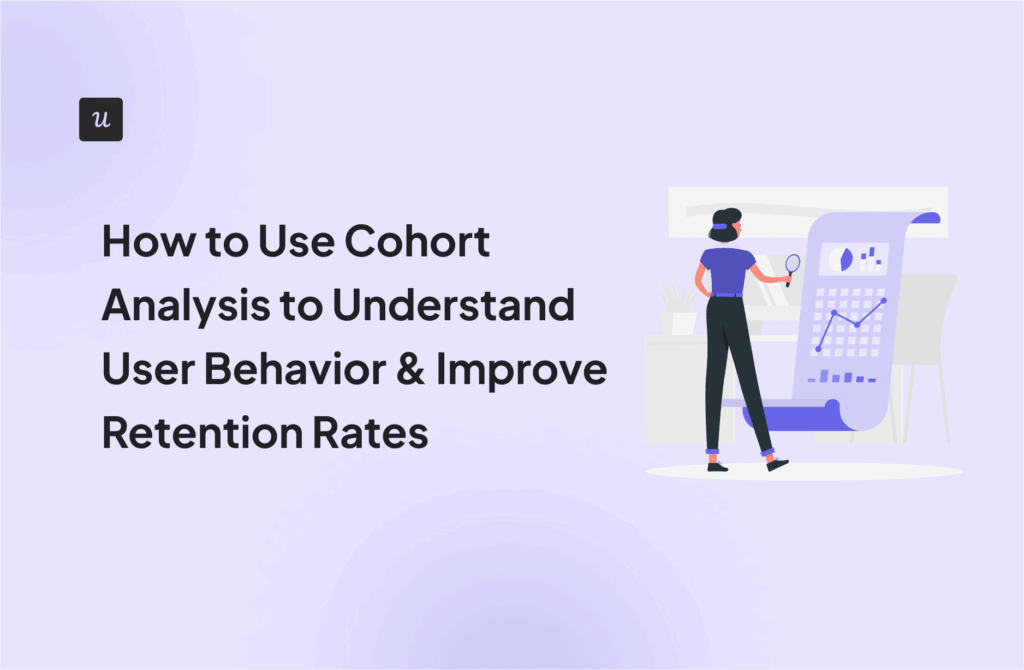
Knowing how to measure customer satisfaction is the key to unlocking insights that improve user sentiment, boost customer retention, and speed up growth.
But, how do you measure such a subjective experience?
In this article, we cover:
- Why you need to measure customer satisfaction.
- The key metrics involved in customer satisfaction.
- Actionable tactics that will improve customer satisfaction.
Let’s get started.
Try Userpilot Now
See Why 1,000+ Teams Choose Userpilot

What is customer satisfaction?
Customer satisfaction measures how much your customers enjoy using your product. It indicates whether they feel positively or negatively about your product.
Why should you measure and track customer satisfaction across the user journey?
Measuring customer satisfaction helps businesses identify areas for improvement, nurture customer relationships and turn users into loyal customers.
If you don’t have processes in place to measure customer satisfaction, you’ll have no idea what elements of your product users either love or don’t love. You’ll waste money investing in the wrong things, or lose out on revenue because you’re not improving the right things.
Tracking customer satisfaction helps you optimize your product, leading to new customers, more happy customers, and repeat business.
Key metrics for measuring customer satisfaction
There are a few metrics you can track to measure customer satisfaction:
- CSAT (Customer Satisfaction Score)
This score indicates the percentage of users who are satisfied with an element of your product, such as a feature or an interaction with the support team.
- NPS (Net Promoter Score)
NPS specifically asks customers how likely they are to recommend your business to a friend. This score is usually rated on a scale from 1-10.

- Customer Happiness Index
The Customer Happiness Index is a newer metric developed by HubSpot. It measures three elements of your customer’s experience: product usage frequency, product usage depth and the “stickiest” product features.
- CES (Customer Effort Score)
CES measures how much effort a customer has to put in to either get value from your product.
It’s measured by running surveys asking customers to rate how easy or difficult it is to complete a certain action, such as using a feature or finding answers to their questions.

- Churn Rate
The churn rate measures how many customers cancel in a certain period.
The churn rate is a great indicator of customer satisfaction since dissatisfied customers cancel at a faster rate.
- CLV (Customer Lifetime Value)
CLV is the total revenue you earn per customer over the lifespan of their subscription or relationship with your business. It’s calculated as an average across all customers.
Again, a high CLV is an indication of satisfied customers since they’re either staying with your business for a long period, upgrading their plans, or expanding into your other product offerings.
How to measure customer satisfaction in 10 different ways
Now that we’ve covered the best metrics to track customer satisfaction, let’s dive deeper into how to measure them.
Calculate customer satisfaction with CSAT surveys
The CSAT score measures your customer’s satisfaction levels with a certain aspect of your product, like a feature or a customer support interaction.
It’s calculated by surveying your customers and asking them to rate their satisfaction on a scale.
Here are some typical survey questions:
- How helpful was this support conversation/tutorial video/help article?
- How satisfied were you with this feature or this support conversation?

You then collect the positive responses, divide that by the total number of responses and multiply it by 100. This will give you a percentage score showing your customer satisfaction levels.
Example: 10o positive responses divided by 175 total responses x 100 = 57% CSAT score.
CSAT surveys are usually sent when a user completes an action, interacts with a feature, or connects with customer support.

CSAT surveys have their advantages and disadvantages.
Advantages:
- They’re completed at the moment, asking customers for their feedback immediately after the action is complete. Their memory is still fresh, so they can provide accurate feedback about the experience.
- They’re specific to one element of your product experience, so you can gain actionable insights easily.
Disadvantages:
- Survey response rates can be low. Also, people may not give any thought to their answers, skewing results.
- Customer satisfaction is a subjective experience. One user’s standards for feeling satisfied with a product might be completely different from another.
Measure customer satisfaction and loyalty with NPS surveys
NPS surveys ask customers how likely they are on a scale of 1-10 to recommend your business to their friends.
The actual net promoter score calculations are done by first tagging responses by promoters (scored 9 or 10), passives (scored 7 or 8), and detractors (6 or less). Then, you subtract the percentage of detractors from the percentage of promoters to get your NPS metric.
For example, if 30% of people are promoters and 10% are detractors, you would do the following calculation:
30% (promoters) – 10% (detractors) = 20 (NPS)
NPS surveys should be delivered multiple times across the user journey. The first time should be after someone has completed a key action in your app. After that, the surveys should be triggered sporadically, such as when you launch a new feature or make big changes.

Wondering if NPS surveys are the right option for your team? Here are some advantages and disadvantages.
Advantages:
- It’s a good indication of customer loyalty. High NPS usually predicts faster growth.
- Since it’s only one quick question being asked, survey response rates are typically high.
- Helps you recognize who your promoters and detractors are. You can ask for testimonials from promoters or invite them to join your affiliate program. On the other hand, reach out to detractors to offer them 1:1 assistance to improve their experience.
Disadvantages:
- You don’t get an explanation for the scores since users are just giving you a rating. Ask follow-up open-ended questions to gather qualitative insights.

Leverage customer effort score (CES) surveys to determine the service’s ease of use
Customer effort scores give you valuable insights into how user-friendly your product experience is, including the UI, features, and interactions with your team.
These in-app customer surveys or email surveys are generally sent out after a customer has interacted with your support team, or they’ve tested out a new feature for the first time. Respondents choose from a range of seven, starting from “Strongly Disagree” to “Strongly Agree”.

The Customer Effort Score is calculated by measuring what percentage of respondents found the interaction easy.
Here’s the formula:
Customer Effort Score = (number of ratings of 5, 6, and 7/number of responses) x 100
For example, if 200 customers responded, and 80 have rated either 5, 6 or 7 on a seven-point scale, the CES will be (80/200) x 100 = 40.
CES has its advantages and disadvantages.
Advantages:
- It helps you understand where customers are facing friction so you can make better product improvements.
- Reducing customer effort directly leads to higher customer satisfaction, so calculating and monitoring this score should be a priority.
Disadvantages:
- You don’t automatically get insights on what users find easy or difficult to use, since they’re usually choosing a score from a range. Ask follow-up questions to get detailed feedback.
- Customer effort is just one facet of customer satisfaction. Other factors like pricing, design, support, and value are highly influential too. CES can’t measure customer satisfaction as a whole.
Understand how well your product meets the needs of your customers with product-market fit surveys
Product-market fit (PMF) surveys measure customer satisfaction by asking customers how they’d feel if your product was no longer available.
If at least 40% respond with “Very disappointed”, overall satisfaction is high and you have reached product-market fit.

Reach out to inactive users via email and understand what’s stopping them
The in-app surveys we’ve talked about above aren’t effective for users who don’t use your app that frequently.
Although email surveys typically have a lower response rate than in-app ones, they’re more likely to be seen by inactive users. Collecting customer insights from inactive users is just as important to help you make improvements that increase product adoption.
Email is also the right avenue to use for long-form surveys since in-app surveys should be concise.

Monitor social media mentions to find out how customers feel about your brand
You can measure customer satisfaction by monitoring comment sections and tags on social media. They’re often full of untapped customer feedback.
To easily track social media mentions, you can use specialized software like Brand24 or Mention.
Analyze customer reviews from 3rd party websites
Not all feedback has to be direct and solicited. What people voluntarily say about your product and brand matters since it’s the most sincere feedback.
However, keep in mind that customer reviews from 3rd party websites are usually the most extreme feedback – either very positive or very negative. No one bothers with leaving an unsolicited review unless they’re really happy or really angry.

Conduct one-on-one user interviews to get more in-depth feedback
One-on-one user interviews are one of the oldest techniques, and a costly one too.
Doing these at scale is difficult since you need to carve out time to manually interview people. That being said, one-on-one user interviews are great for collecting more detailed feedback from specific users.
Since participants need to invest a lot more time and effort here than with microsurveys, offer them small incentives to motivate them and show your appreciation.

Pair user feedback with product usage analytics
Product usage analytics is a form of indirect feedback that can give you good insights into customer satisfaction levels. Monitor how users interact with your product, which features they like, and which features they neglect.
Then, you can make product improvements based on the data.

Gather and analyze user insights with a live chat
Live chats are another great way to collect feedback from your customers. By using live chat software to help people connect with your customer support team to resolve issues, you can analyze the conversations to spot recurring issues.
Then, you can improve on those features, contributing to better user satisfaction.

Enable users to give feedback on their own terms with passive surveys
Give your customers the chance to voluntarily give you feedback on their terms by placing in-app feedback widgets at multiple touch points.
That way, they can respond when they’re ready.
You can see in this example from Miro how subtle passive surveys look in the UI. They don’t negatively impact the user experience.

In this next example, Userpilot collects passive feedback with an always-on widget in its resource center. This is a great place to collect feedback since it doesn’t interrupt the product experience.

How to improve customer satisfaction
Now that you understand how to measure your customer satisfaction metrics, it’s time to improve them.
Personalize the customer experience
Personalized customer experiences contribute to higher satisfaction since customers can achieve value easier and faster.
To start, segment users based on previous survey responses, jobs to be done, or other attributes. Then, provide a tailored product experience for each segment to effectively address their specific needs and drive value.

Follow up with unhappy customers and offer help
Unhappy customers spend less, churn faster, and are at risk of leaving negative reviews.
Proactively turn unhappy customers into happy ones by having your customer success team reach out to customers with low satisfaction levels. Learn about their issues and offer to help them in a 1:1 setting. Going the extra mile like this shows them that you care and helps you to earn their trust and loyalty.

Deliver proactive customer support with a self-serve resource center
Anticipate the issues customers may come across later in their journey and come up with solutions before they search for them. The best way to do this? Build a self-serve resource center that features helpful content on-demand.
This has also the added benefit of reducing the wait time for a response from your support team and it removes friction from the product experience.

How to measure customer satisfaction and analyze customer feedback with Userpilot
Userpilot enables you to create and distribute in-app surveys without a single line of code. Moreover, Userpilot lets you customize your survey design using themes to stay consistent with your branding and make feedback forms blend in with your UI.

After collecting qualitative insights, you can tag NPS responses by theme or keyword to identify reoccurring patterns, enhance your product, and increase customer satisfaction.

And for an even wider reach, Userpilot’s new mobile features allow you to trigger NPS surveys (among other survey types) directly in your mobile apps, effortlessly gathering valuable user insights on-the-go.
Conclusion
Measuring customer satisfaction should be a priority for any SaaS business. By sending out surveys and collecting honest feedback, you’re hearing straight from the source what makes your customers happy.
Want to get started with measuring customer satisfaction? Get a Userpilot Demo and see how you can run in-app surveys and collect feedback, code-free.






